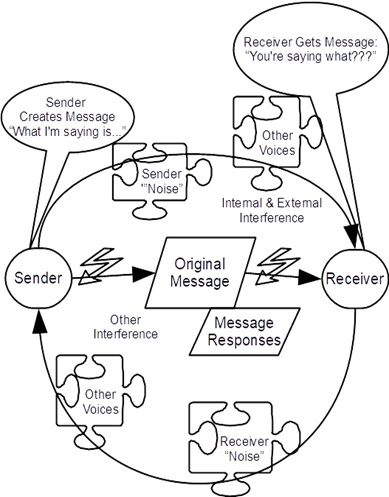
What do you see in Figure 1: a young woman, an older woman, or both? If you can’t figure out this optical illusion, check out the answer on National Geographic’s YouTube Channel.
Now, consider our written communication. What we believe our work is expressing and what our readers take away from their reading of our work may be altogether different messages. Digital communication has become the norm, and with many of us working from home during the pandemic, our audience must be able to decipher our emails, memos, reports, and school essays. Unfortunately, mastery is easier to hope for than to achieve.
Why Bother
Let’s face it. Writing isn’t fun for many, and it’s easy to come up with a litany of reasons to expend minimal effort at the keyboard:
- Writing is hard.
- It’s boring to be tethered to the computer and to have to decide what to say next.
- If readers don’t get it, they’ll be back in touch for clarification.
- It’s a big waste of time—most people probably don’t read half of what they receive.
- Worrying about quality writing sounds old-fashioned, nitpicky, and pedantic.
- We learned all that writing stuff in school, years ago.
- Writing quality is subjective anyway, and who is qualified to judge our work?
How We Interact through Language
Before we dismiss the importance of improving our written work, we should consider the illusions inherent in the communication model, shown in Fig. 2. The essential purpose of communication is to share ideas through our words. The communication model depicts a feedback loop in which the sender transmits information to the receiver. But first, the message must pass through a landmine of virtual linguistic filters. Because our words are converted into images and then back into words by the receiver, a different meaning than the one intended may well be received.

As with optical illusions, our brains interpret and try to make sense of our words. And even though our words should be able to convey a clear message, often they don’t, especially if we incorporate abstract concepts without explanation, slang, or language worded in a way that makes understanding difficult. These and other roadblocks make the communication process even more difficult in the digital age. But written communication involves an additional brain-twisting challenge—the lack of accompanying body language, which accounts for as much as 70% of message communication. The body language that so richly enhances verbal messaging is stripped from our written words.
Hidden in Plain Sight
Visual illusions are popular and fun to interpret, but not when they derail our message, causing miscommunication that leads readers to throw shade on our prose. Sometimes, we don’t even know the reasons for the disconnect, which may include:
- Learning the wrong way to write—or not learning well.
- Failing to master the basic rules of grammar in school.
- Not knowing why we’re misunderstood.
- Not realizing that we’re misspeaking.
- Adopting business-speak as our writing guide.
- Not understanding the syntax issues in language.
Language constantly evolves, and writing customs have become increasingly casual and conversational over the years. Social media also offers platforms to push misinformation and disinformation wrapped in twisted but compelling ideas that we inadvertently pass along in our messages. The dynamic unfolding of language creates meanings out of what we see around us by introducing new words or different ways to express what we’re thinking. As these changes occur, we must also refashion our language to maintain a clear message.
Banish Writing Illusions
The computer screen has essentially become our BFF for working solo. To be a communication superstar with a clear online presence in this digital age, remember the communication model and beware of illusions lurking in written work. Here are some ways to minimize writing distortions:
- Develop an awareness of the denotations and connotations of messages.
- Read your work out loud to hear where you should clarify words and sentences.
- Treat punctuation like semaphores to direct and guide readers through your documents.
- Use the spell check, editor, or dictate features of software programs and grammar checkers to identify issues such as misspellings, grammatical errors, and writing conventions.
- Have a writing buddy read your work and provide a reality check for coherence and organization.
- Set up a feedback system to replace helpful watercooler input about your written message.
- Take a writing course—and write.
- Avoid sending messages in FULL CAPS, the equivalent of shouting.
- Remove any possible slurs, insults, or stereotypes.
- Take a deep breath, and refrain from sending inflaming emails.
- Follow any organizational formatting guidelines that will add clarity to document preparation.
- Donate your time and share your writing talents to help someone else improve their written work. You’ll benefit too!
Mignon Fogarty (aka Grammar Girl), in her Quick and Dirty Tips for Better Writing, reminds us that “We’re all ‘professional’ writers these days because our coworkers, friends, and family judge us on our writing, and we all secretly fear that we could do a better job.”
Why learn about writing? Why indeed!
Mary Meadows is the author of Teach Me to Write: Four Steps to Great Documents, available on Amazon. Reach her at Teach Me to Write, LLC
